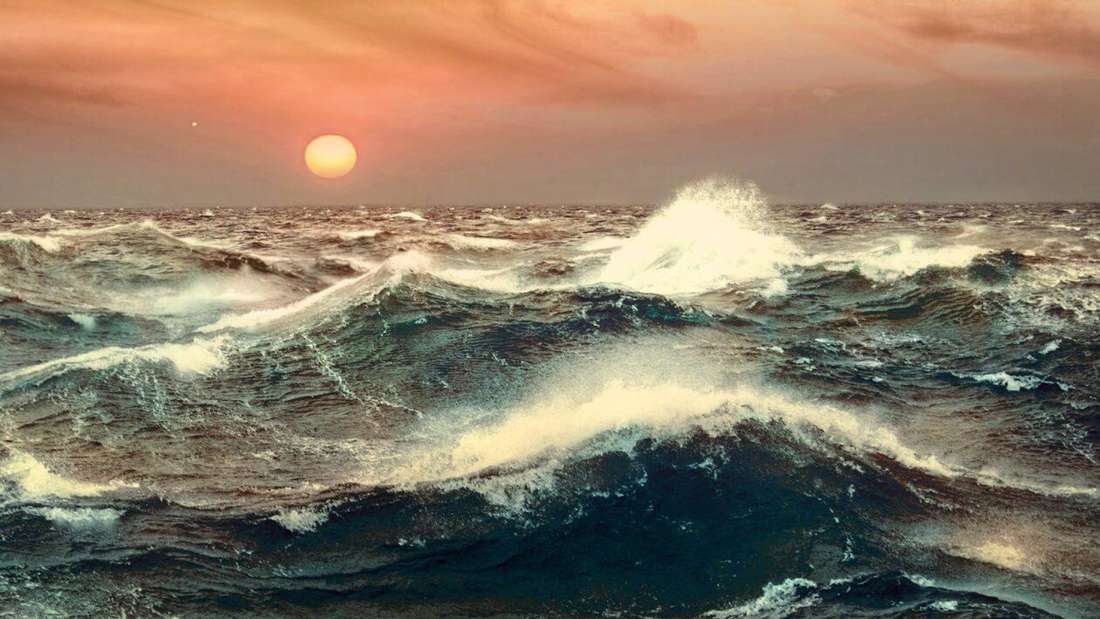split, tear
University of Montreal researchers have discovered an oceanic planet in a binary star system 100 light-years away.
FRANKFURT – In the film “Interstellar”, the first planet that the spaceship “Endurance” heads for in search of an alternative to the now inhospitable earth turns out to be an ocean planet – completely covered with water. The researchers of our time do not yet have to go in search of a new home for mankind. However, they are intensively observing exoplanets outside our solar system using data from modern space telescopes.
A team of researchers from the University of Montreal (Canada) has now discovered a celestial body 100 light-years away that can come very close to the imaginary ocean planet “interstellar”. Designated TOI-1452 b, it orbits one of two relatively small stars in a binary system in the constellation Draco. Scientists described their discovery in the Astronomical Journal.
It is possible for an exoplanet to be an ocean planet
While the two stars are smaller than our sun, the water-rich exoplanet is about 70 percent larger than Earth and about five and a half times as massive. Most interestingly, TOI-1452 b orbits its star at a distance that allows for a temperature on its surface that is neither too hot nor too cold to contain liquid water. The latter is considered a prerequisite for life. Researchers even suspect that the planet is completely covered by a thick layer of water, making it an oceanic planet.
TOI-1452 b was discovered by the US Space Agency’s Tess Space Telescope, which scans the sky for planetary systems near our telescope. The telescope signal showed a slight decrease in the brightness of the slightly larger star in the binary system every eleven days. Such a regular discontinuity is indicative of a planet in a probable orbit. TOI-1452 b was finally discovered using the Observatoire du Mont-Mégantic, a telescope developed by Canadian researchers equipped with a camera that provides high-resolution images.
There is more water on the planet than on Earth
Astronomer Charles Cadieux of the University of Montreal explains: “It played an important role in confirming the nature of this signal and estimating the radius of the planet. We had to make sure that the signal detected by TESS actually came from an exoplanet.”
The planet TOI-1452 b is completely different from our homeland. Although Earth is often referred to as the blue planet because about 70 percent of its surface is ocean, it is “essentially a very dry planet,” according to a statement from the University of Montreal. In fact, water makes up “a tiny fraction of the mass — less than one percent.” Two University of Toronto scientists who specialize in modeling the inner workings of exoplanets have concluded that the water in TOI-1452 b could make up as much as 30 percent of the planet’s mass.
satellite bulletin
Subscribe to the free space newsletter and receive reading tips about astronomy and space travel twice a month.
Most other oceanic planets are made of water vapor
In our solar system, too, there are celestial bodies with a supposedly high water content. However, these are not planets, but rather the moons of Jupiter, Ganymede and Callisto, and the moons of Saturn, Titan and Enceladus. Contrary to what was assumed for TOI-1452 b, its surface is not covered by liquid water but probably by ice.
Exoplanets that could be oceanic planets similar to TOI-1452 b have also been discovered. These include planet GJ1214b, discovered by the Hubble telescope in 2012, which orbits a red dwarf star 40 light-years from Earth and may contain only a small rocky core and lots of water. Observations showed that its atmosphere probably consisted mostly of water vapor. Ocean planets are also suspected in the Kepler-62 star system, 1,200 light-years away.
Liquid water does not guarantee the possibility of life on a planet
Although liquid water is considered a requirement for life, that doesn’t automatically mean that planets with lots of it are habitable places. A study by researchers from Belgium, Germany, Austria and France published in 2016 suggests that too much water may actually be a barrier to the emergence of life. If much of it covers the planet, the pressure at the sea floor increases sharply. The result: the formation of “high-pressure ice”, which has a particularly dense crystalline form and is deposited on the sea floor. As a result, they become a barrier, separating the sea floor from the atmosphere so that exchange is no longer possible. However, for life to develop, both minerals from the sea floor and organic matter from the atmosphere are needed.
Exoplanet TOI-1452 b is now being closely observed with the new James Webb Space Telescope to better assess its properties. “As soon as possible, we will book time on Webb to observe this strange and wonderful world,” says René Doyon, director of the Observatoire du Mont-Mégantic at the University of Montreal. (Pamela Doerhofer)
but there could also be another planet in the solar system that is unknown before Give. But more precisely, nobody can locate this planet anymore.
#world #covered #water


Leave a Comment